In today's world, there are literally hundreds, if not thousands, of different types of kitchen knives, tools, gadgets, and equipment that are available to the home cook.
It can be quite overwhelming when first trying to properly outfit your kitchen. In this guide, I'll go over the different types of kitchen knives available and their uses. From there, you can decide which knives you should own. I will also recommend some of the best chef's knives you can purchase.
If you are interested in what other kitchen tools and equipment you may want to have on hand, check out Basic Cooking Tools and Utensils.
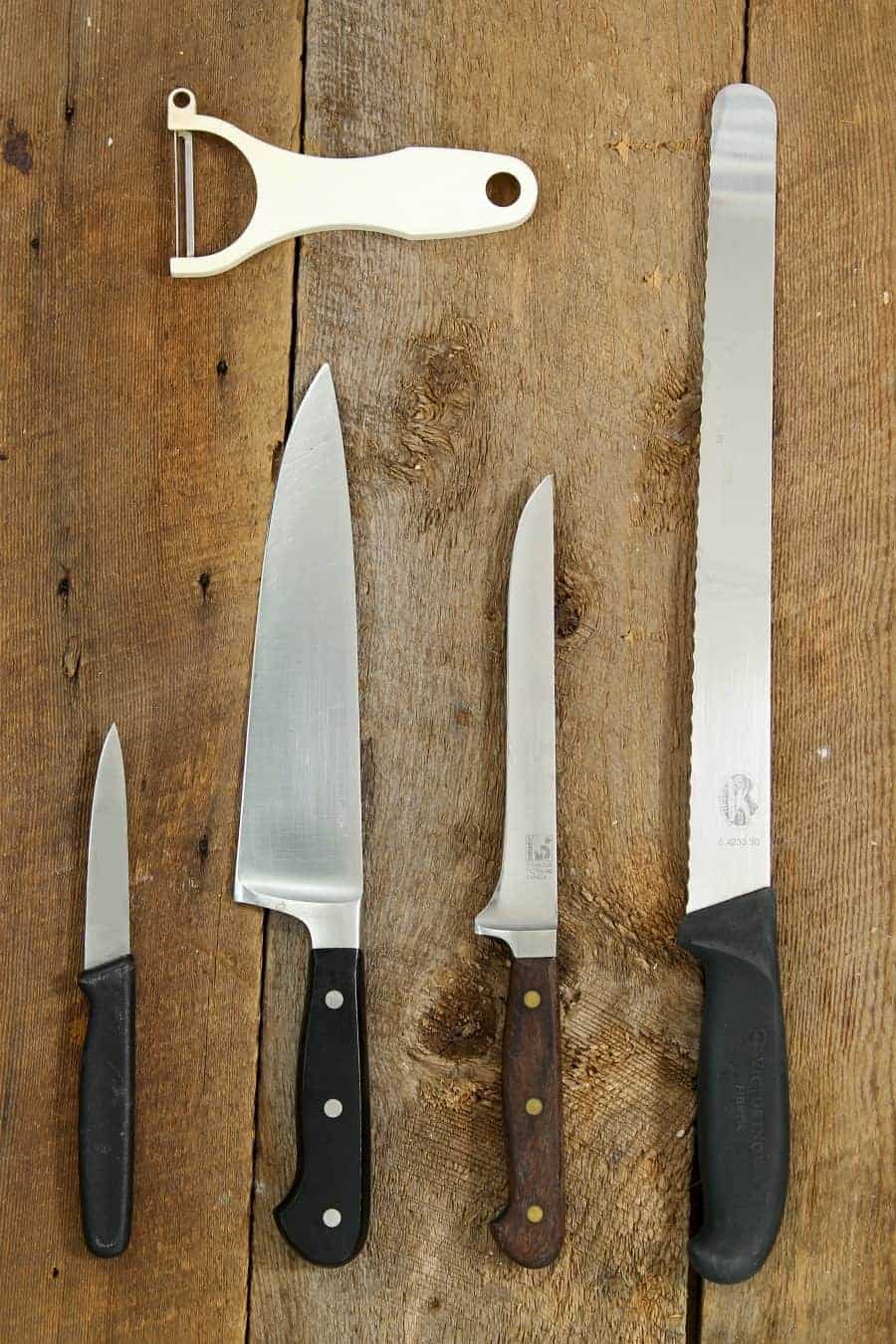
This post contains affiliate links for which I may be compensated if a purchase is made through the links provided. For more information, please read my affiliate disclosure.
The Main Types Of Kitchen Knives Available
When first looking to purchase chef's knives, either to outfit your home kitchen or as a budding chef preparing for culinary school, it's important to know the different types of kitchen knives available to you and what they are used for. Depending on what you regularly cook, if you are attending a culinary school or are just a food enthusiast, you may need all of them or just a few.
The main types of kitchen knives are:
- The French or Chef's Knife
- The Utility Knife
- The Boning Knife
- The Pairing Knife
- The Cleaver
- The Flexible Slicer Knife
- The Bread Knife (Serrated Slicer)
- The Butcher Knife
- The Clam & Oyster Knives
All of these knife shapes serve a specific purpose and are designed to make certain tasks easier to perform and the cooking process more enjoyable. As mentioned above, if you are simply outfitting a home kitchen, you may not need all of these.
Read on to find out what they are used for, and then decide which knives fit your cooking style the best.
I've included my 'Chefs Picks' for the various styles of knives. Some of these I own, and a few I have used and wish I owned! They are all professional, high-quality chef's knives favored by chefs and cooks in the cooking Industry.
If you are looking for something a little more economical and not as high-end, I would suggest looking into Grohmann Knives, a Canadian company that offers very good quality knives at an affordable price.
The French or Chef's Knife
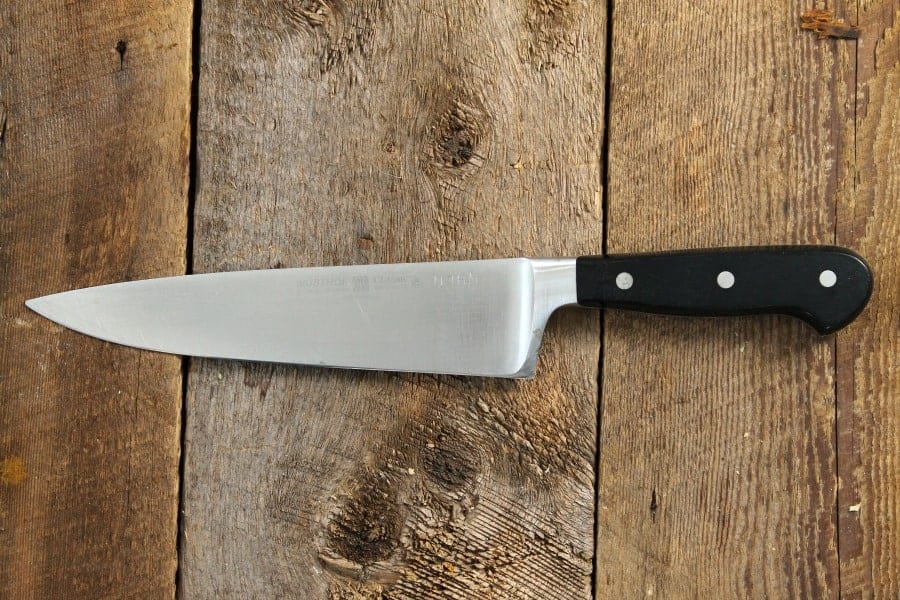
The French, or Chefs Knife as it is most often called, is the jack of all trades in the kitchen. It can perform virtually any task you put before it. If you can choose only one knife from this list, a Chef's Knife is the one to get.
The chef's knife has a rigid blade 8" - 14" (20cm-35cm) long, with a broad heel that tapers to a point. The slightly curved blade allows for easy chopping, slicing, and mincing as the knife rocks back and forth.
Shorter chef's knives tend to be lighter and easier to use for those with small hands, while the longer-bladed chef's knives are a little heavier but make slicing easier.
Chef's Pick: The Wusthof Classic 8-Inch Chef's Knife is a high-quality, durable chef's knife that will last you a lifetime if properly cared for.
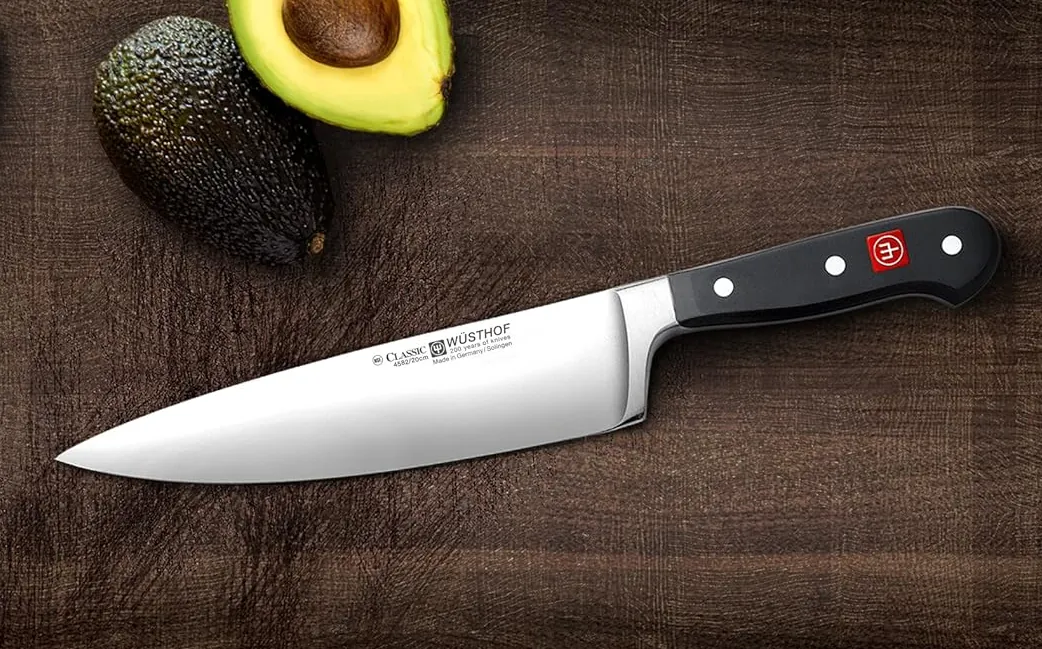
The Utility Knife
Utility knives are just that. An all-purpose knife is meant for various tasks that don't require a blade that is as heavy or sturdy as a chef's knife. Ideal for cutting fruits, soft vegetables, delicate meats, and more, the utility knife features a slightly shorter blade than a chef's knife (between 6"- 8") and is narrower overall.
Chefs Pick: Wusthof Ikon 6" Utility Knife - featuring a handcrafted African Grenadilla wood handle, this full tang knife features Wusthof's iconic, durable steel blade with a rustic-looking riveted handle.
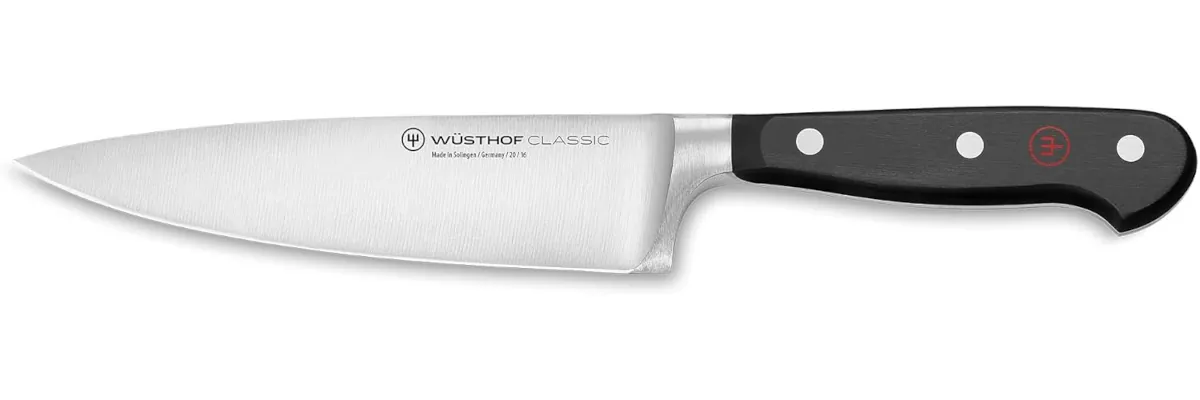
The Boning Knife
Designed to separate meat from bones, the boning or fillet knives are most often used to butcher poultry and clean various secondary cuts of meat. Boning knives are Ideal for cutting through small bone joints, and can easily strip meat from bones without leaving any waste behind. Fillet knives are usually a little bit longer and thinner than a boning knife, with a flexible blade meant to clean fish.
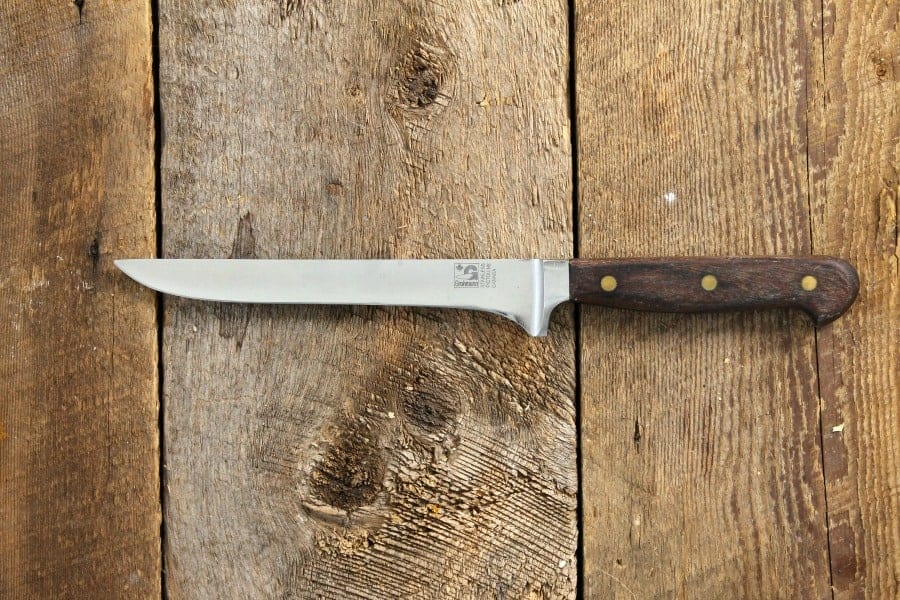
With a thin and semi-flexible blade, 5" - 7" in length, the boning knife can come in various blade shapes depending on the brand of knife.
Because boning knives are generally fitted with a flexible blade, they are not normally used to portion or cut meat as the flexible blade won't produce straight, precise cuts. Once the meat is separated off the bone, a chef's or utility knife should be used to portion the meat itself.
Chefs Pick: The Global 6.25" flexible boning knife - Designed to fillet fish and clean chicken, this light, easy to handle boning knife features a seamless design to ensure easy cleaning.
The Paring Knife
A paring knife is a short, rigid knife with a blade 2" - 4" inches in length. Ideal for precision work, pairing knives are most often used to cut vegetables and small fruits and to prepare garnishes. They are great for peeling vegetables when lacking a peeler and are great for cutting open pomegranates.
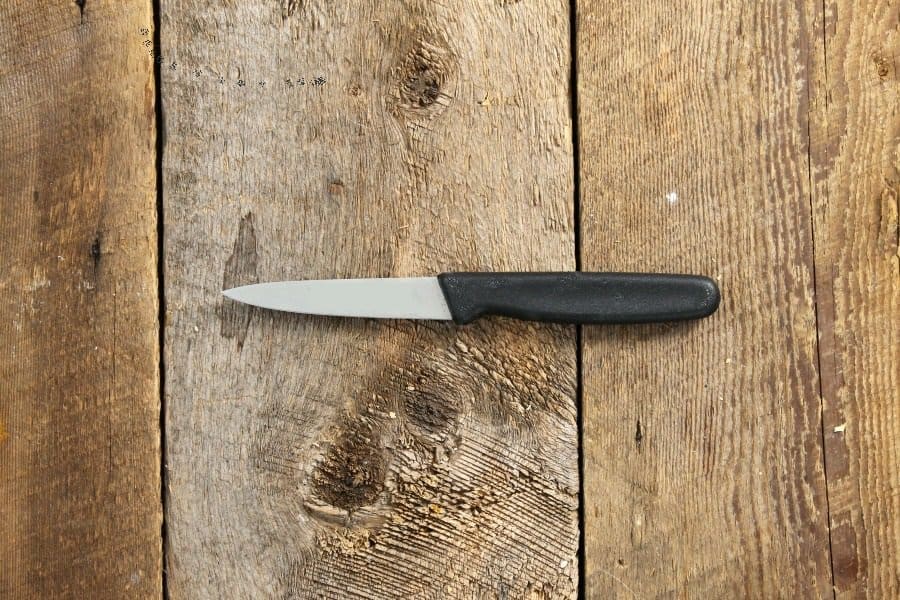
Paring knives may have differently shaped blades (such as a bird's beak), to make cutting curved surfaces or turning vegetables easier.
Chef's Pick: Shun Classic 4" Paring Knife - A light yet comfortable paring knife with a high-carbon stainless steel forged blade featuring a Damascus look. Razor sharp, this paring knife won't let you down.
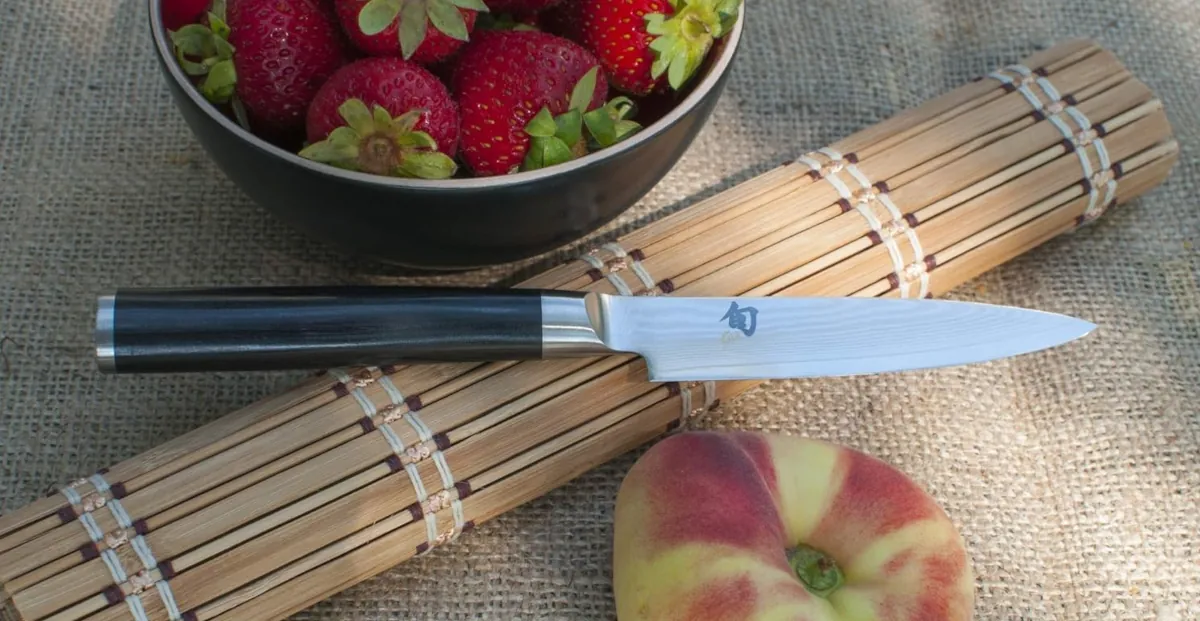
The Cleaver
A cleaver is used in butchery to chop or cut through large bones. With a heavy, large rectangular blade, cleavers are not as popular as they used to be since most meat sold in grocery stores is already broken down into secondary cuts. An old chef's knife is often used by cooks to cut through small bones and open lobsters instead of carrying a heavy cleaver.
Chef's Pick: Wüsthof 8 Inch Cleaver - Perfect for cutting through bones, sinew, or hard vegetables such as squash.
The Flexible Slicer Knife
A flexible slicer knife is used to slice cooked meat and raw or cured fish, and it is king when it comes to precise, thin cuts. With a long (10"- 14") blade, slicers may be flexible or rigid and can come in rounded or pointed ends. They are perfect for carving turkey, slicing roast beef or ham, and cutting sashimi, or sushi.
Chef's Pick: Global 10 ½" Flexible Slicer - A long, flexible, and extremely sharp blade ideal for slicing salmon, ham, or any other meat.

The Bread Knife (Serrated Slicer)
A bread knife is a serrated slicer knife most commonly used to cut loaves of bread and baked goods. With a blade 8" - 12" in length, serrated slicers make a great multipurpose knife for any home cook.
With their sharp 'teeth,' bread knives shine when used in a sawing motion to cut through delicate baked goods, such as sandwich bread, without crushing them. They are also great for cutting roasts.
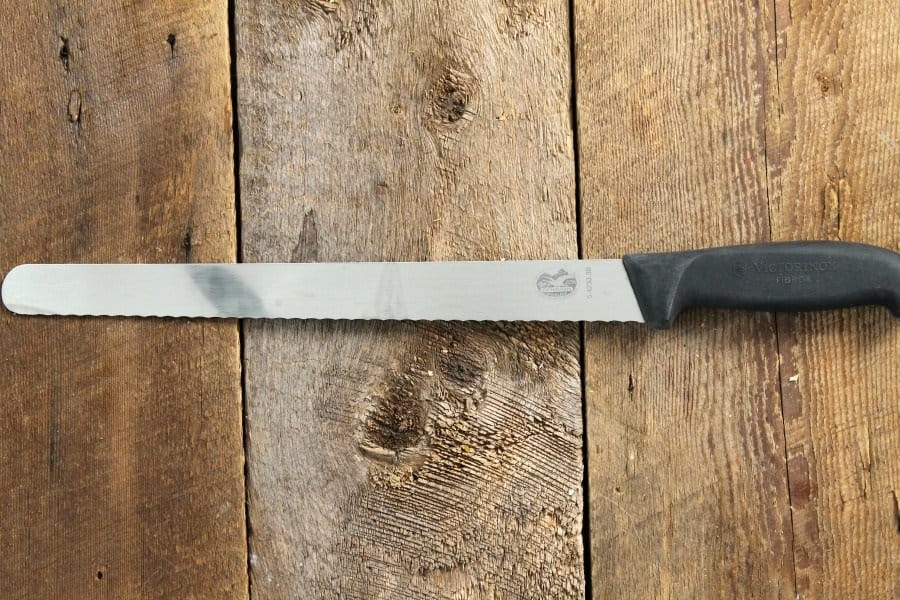
Chef's Pick: Wusthof 9" Serrated Bread Slicer - With a long serrated blade, this bread knife slicer is ideal for cutting roasts, as well as any size of bread!

The Butcher Knife
A specialist knife not seen very often in stores these days, butcher knives are used to cut primary cuts of meat off of butchered animals. They can also be used to break primary cuts of meat down into secondary cuts.
Boasting a large scimitar-style blade, the average cook would forgo a butcher's knife instead of a chef's knife, as a chef's knife can accomplish most of what a butcher's knife can with a little extra work.
Chef's Pick: Victorinox 8" Butcher/Breaking Knife - With a large high-carbon stainless steel blade, this butcher's knife can easily handle even the largest roasts and cuts of meat.

The Clam & Oyster Knives
Another (but more common) specialty knife, clam, and oyster knives are used to open oyster and clam shells. Both feature short rigid blades, a sharp point, and a sturdy handle, though generally only the clam knife will have a sharp edge.
Chef's Pick: Chesapeake Bay Oyster Shucking Knife - Featuring a large round handle and short blade for good leverage. It is also equipped with a small guard to protect your fingers should the knife slip.

How to Sharpen Kitchen Knives - Video Tutorial
What Are The Most Important Knives To Have?
When it comes down to it, you really only need to have three different types of knives in your kitchen
These three knives will handle any task thrown your way in a kitchen. All other types of kitchen knives are helpful, and can make certain tasks easier, but are not essential. The average home cook will do just fine owning a good quality set of these three knives. The quality of the knives is more important than the quantity and variety of knives in your kitchen.
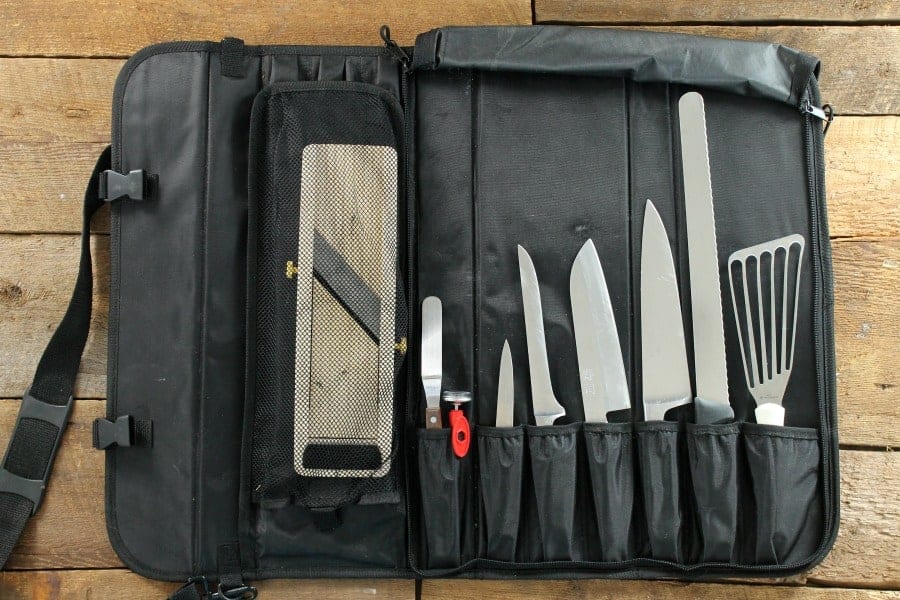
If you are attending a culinary school, equip yourself with all the above styles of knives. Learn how to use them properly and practice your knife skills.
Make sure once you have your knife collection complete to store them in a knife roll to keep them clean and in good condition!
Did you find this guide useful?? Comment & Rate it below, then tag me on Facebook. For more DIY gardening tips & from scratch recipes follow me on Facebook & Pinterest
This post contains affiliate links for which I may be compensated if a purchase is made through the links provided. For more information please read my affiliate disclosure.
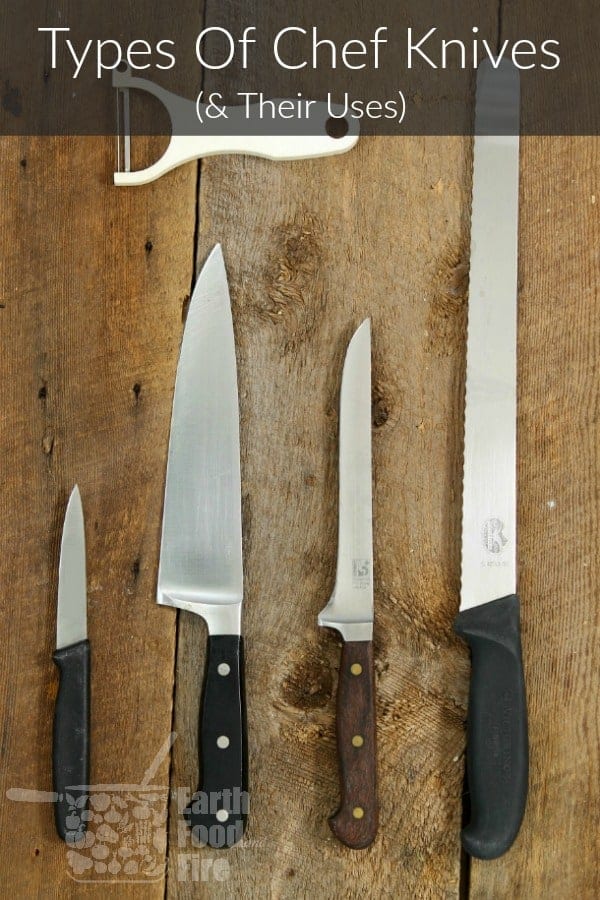

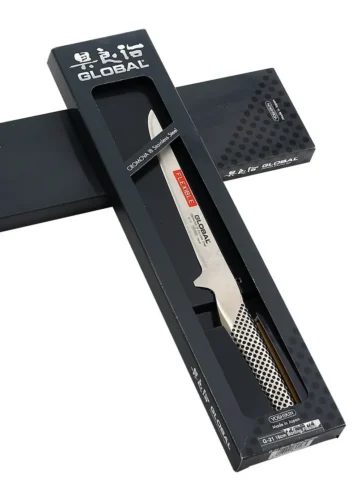
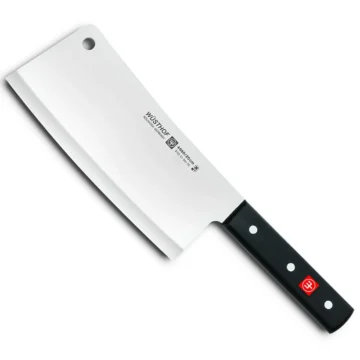
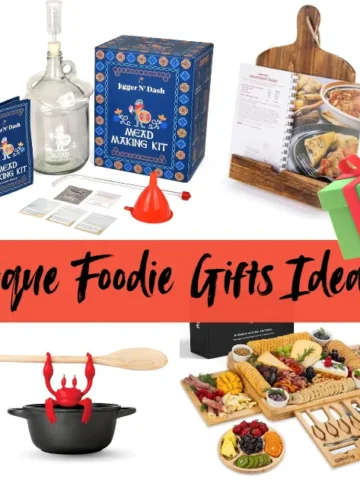
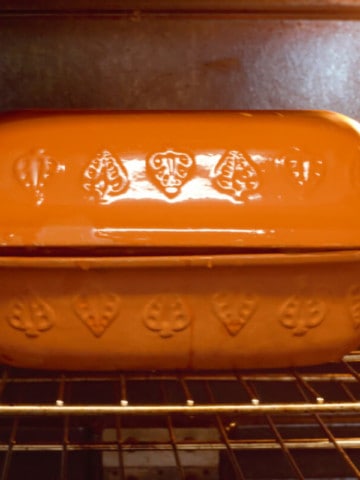
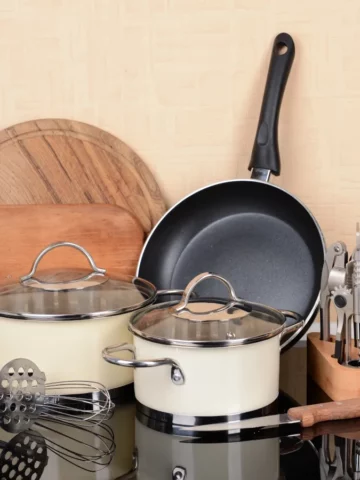
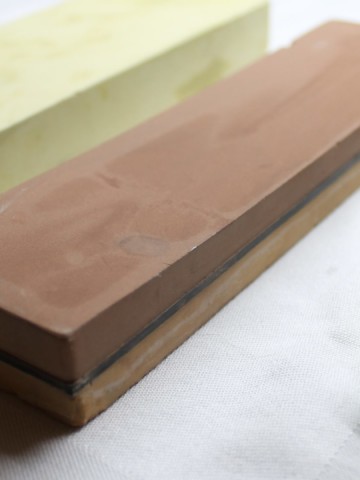
Hilda@steak knives
Awesome & brilliant. Really love your idea as I'm great full to you. Thanks a lot. Keep this up.
Lizzy
What a fantastic guide! I definitely need to up my knife game!
Melanie @ Bon Appet'Eat
Such a great article! Thank you for the refresher but I also learnt! Pinning also!
Chef Markus Mueller
Thanks! I hope it helps you pick a good knife for your kitchen!
Jessica
So thorough and so helpful! Great details on what each knife is best used for. Definitely bookmarking this for use later!
Chef Markus Mueller
Awesome!
Natalie
Such an informative post! Learned a lot!
Jill
So informative. I didn't know clam and oyster knives existed! But regardless, a good knife is essential in the kitchen!
Adriana Lopez Martin
Thanks so much for the insight on this many people think we use only one type of tool for cooking, but we do use a variety of different things especially knives.
Tisha
This is such a great share! Very informative 🙂
Annissa
This is so informative and helpful! Thanks for sharing!